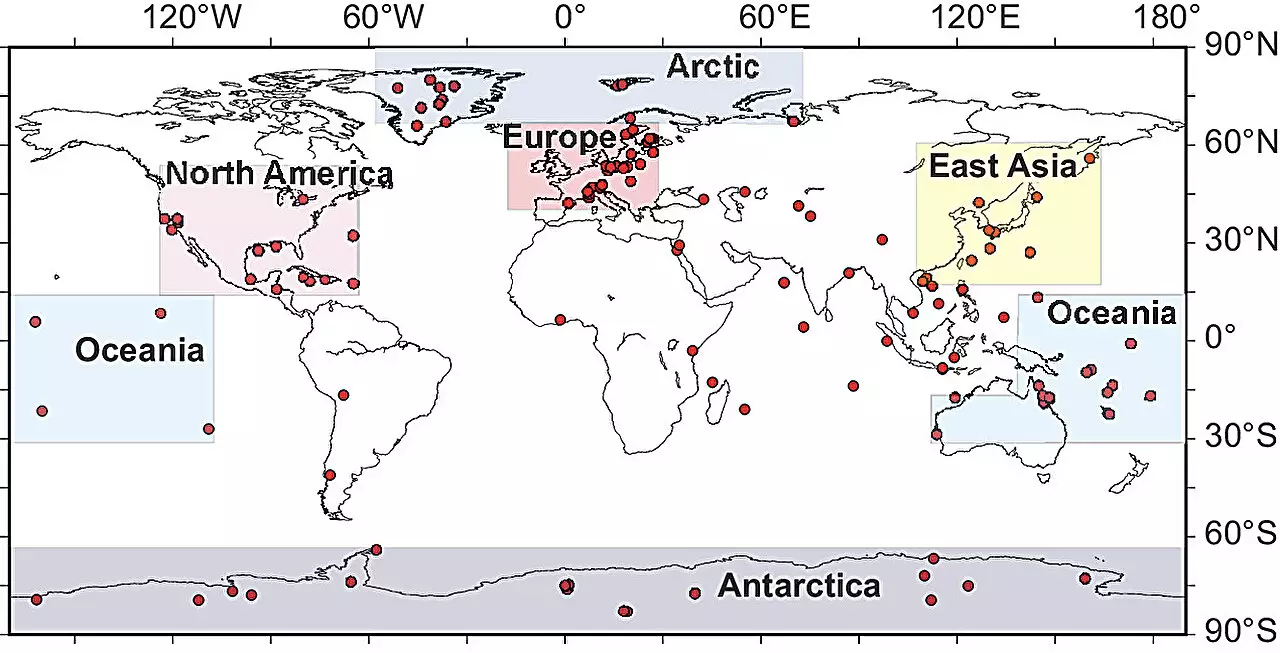The concept of the Anthropocene, introduced by Nobel laureate Paul Crutzen in 2002, has catalyzed significant debate among scientists about humanity’s role in altering Earth’s geological record. Crutzen proposed that the Holocene epoch, which began approximately 11,700 years ago, has come to a close due to extensive human activities. A recent collaborative research effort from prestigious institutions, including the University of Tokyo and Australian National University, has reignited this discussion, pinpointing the 1950s as the most probable initiation of the Anthropocene.
The research team meticulously analyzed three primary contenders for the Anthropocene’s official start date: the late 1800s, the early 1900s, and the 1950s. Each of these periods exhibits significant human influence on the planet, yet the 1950s emerged as the standout candidate due to the breadth and permanence of the changes that occurred during that decade.
The late 1800s marked the dawn of the Industrial Revolution, a period characterized by burgeoning industrial activity leading to increased carbon emissions and pollutant dispersal. This era established the groundwork for significant alterations to the Earth’s environment, as manufacturing processes began to dominate economies worldwide. However, while this time yielded notable changes in atmospheric composition, its impacts were more gradual in onset when compared to the seismic shifts witnessed in the mid-20th century.
Next, the early 1900s brought forth profound changes in ecology and the advent of significant anthropogenic markers, such as shifts in global pollen distributions and rising concentrations of black carbon resulting from escalating industrial activities. Though these developments highlighted humanity’s encroachment on natural systems, they still lacked the extensive global ramifications observed in the decades that followed.
In contrast, the 1950s witnessed the confluence of multiple alarming trends that showcased humanity’s profound impact on the planet. During this period, the introduction of plastics and microplastics emerged as a game changer: these materials began to infiltrate ecosystems across the globe, introducing new forms of pollution that would define the planet for generations to come. Moreover, this decade marked the inception of the nuclear age, with atmospheric nuclear tests leaving indelible markers on geological strata worldwide.
Helping to corroborate the selection of the 1950s are indicators of climate change that began manifesting more prominently during this era. The clear uptick in greenhouse gas emissions around this time correlates with various observable climate shifts and reflects humanity’s growing influence on global temperatures and weather patterns. The synthesis of these numerous markers—pollutants, plastic proliferation, nuclear fallout, and temperature increases—offers compelling evidence that the mid-20th century represents a significant turning point in Earth’s geological narrative.
What is at stake in designating the 1950s as the start of the Anthropocene? Recognizing this period emphasizes a turning point, wherein human activity catalyzed rapid and potentially irreversible transformations of the Earth system. The research team concluded that the implications of this designation suggest the likelihood that it will take millennia—if not longer—for the planet to revert to Holocene conditions if humanity were to exit the scene.
This inquiry is not merely academic; it carries weighty ethical and policy implications. Amid growing awareness of climate change and environmental degradation, framing the present as part of a new geological epoch invites a sense of urgency. It compels us to confront the reality that continuous exploitation of Earth’s resources can lead to calamities that threaten biodiversity and human existence alike.
Through this study and its consequent findings, the discourse around the Anthropocene has been reinvigorated. By positioning the 1950s as a watershed moment, the scientific community compels all societal actors—policymakers, businesses, and individuals—to acknowledge the profound legacy of our actions and to advocate for sustainable practices that honor the delicate balance of our planet’s ecosystems. As we navigate the complexities of our time, recognizing our agency—and responsibility—over Earth’s trajectory is not just essential; it is imperative for the sustainability of our environment and future generations.



Leave a Reply